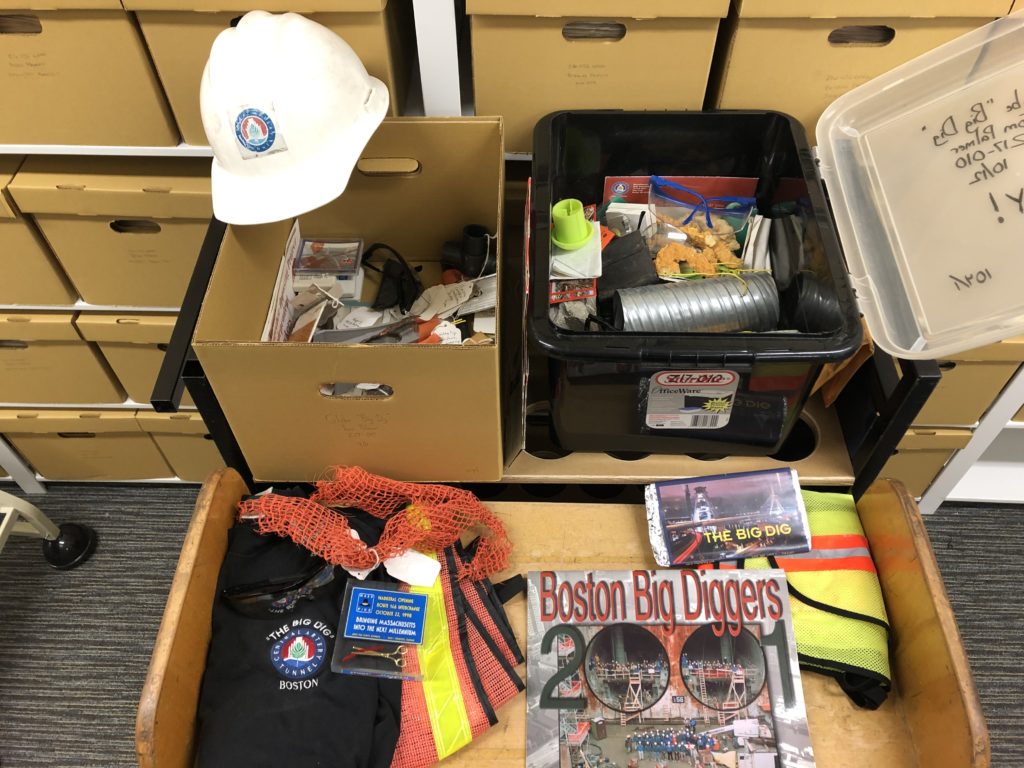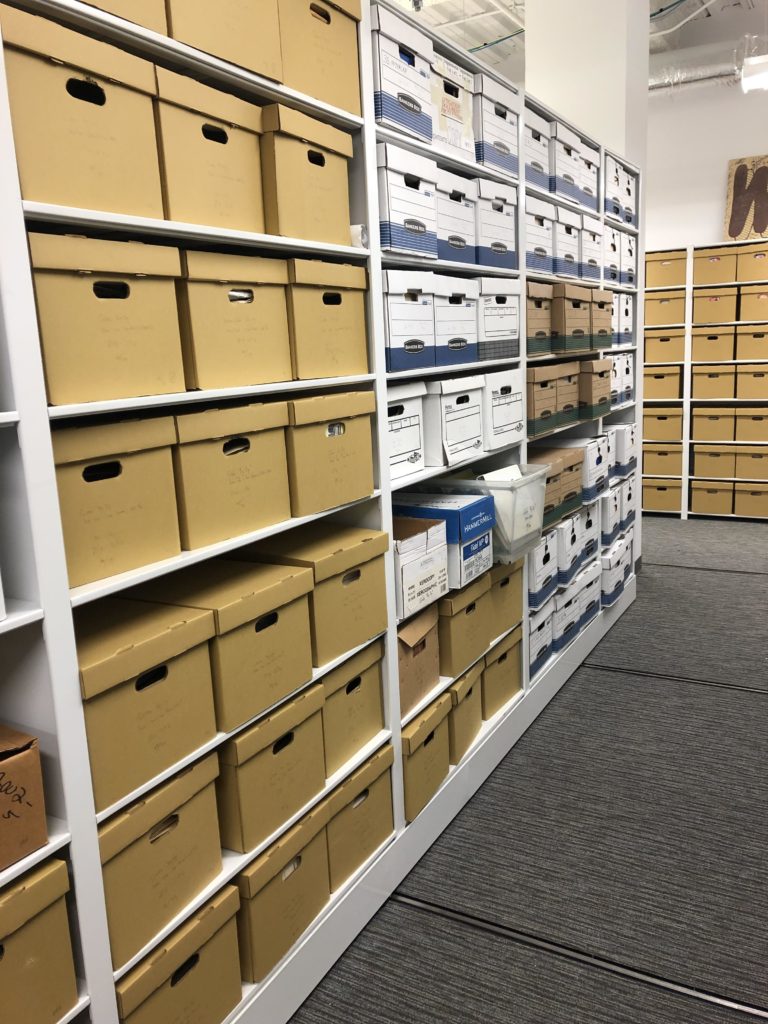The Archives and Special Collections recently received materials from two Boston Globe reporters about their work on reporting various aspects of the Central Artery/Tunnel Project (Big Dig). Investigative journalist Sean Murphy and transportation journalist Tom Palmer wrote on the Big Dig throughout the 1990s and 2000s, covering cost overruns, court cases, traffic updates, and more. This new collection joins a group of other collections already housed at Northeastern documenting the Big Dig.
When collections are donated to the Archives, they have been packed up by the person or organization in whatever kind of box (or other container) that they had available. When the collections arrive at the Archives, we first re-box the materials in acid-free, archival quality boxes to help preserve them. It may not always seem like it at first glance, but there is usually a reasoning behind the way materials are boxed by the donor. Because of this, we make sure to re-box the materials in the same order in which they were originally packed. Once the materials are rehoused we can begin the (often long) process of creating a finding aid for the collection. Step one: conducting a survey.
In order to better understand this new collection and how it fits in with the other Big Dig collections we already have, I conducted a survey on the materials. At 114 boxes, surveying this collection was a bit daunting, but the only thing to do is start at box one.
For the survey, I created a spreadsheet in order to make notes of the types of materials in each box as well as any other notes on things that I come across. Wading my way through all of the boxes, I found materials ranging from Freedom of Information Act (FOIA) requests on budgets and contract information, various court cases that stemmed from the project, contractor lists, accident reports, community newsletters, publicity materials, maps, and even boxes of artifacts from different construction and excavation sites.

Items donated by Tom Palmer include promotional items like a calendar and chocolate bar wrapper, construction materials like safety net, pipes, and washers, and memorabilia like the paper weight from the Ted Williams Tunnel opening seen on the lower left.
Going through these materials, I learned just how big the Big Dig was. The materials cover not only how this project directly affected the local communities, but also how major this project was for the international engineering and construction fields.
A survey is not an exhaustive list of every single thing in the boxes, but it is a good start. With it we are able to make a summary of the collection, put it in our online Archives catalog, and make it visible to potential researchers. A survey does not replace a detailed finding aid, but it serves as a crucial step in allowing researchers to access relevant materials in a timely manner.
